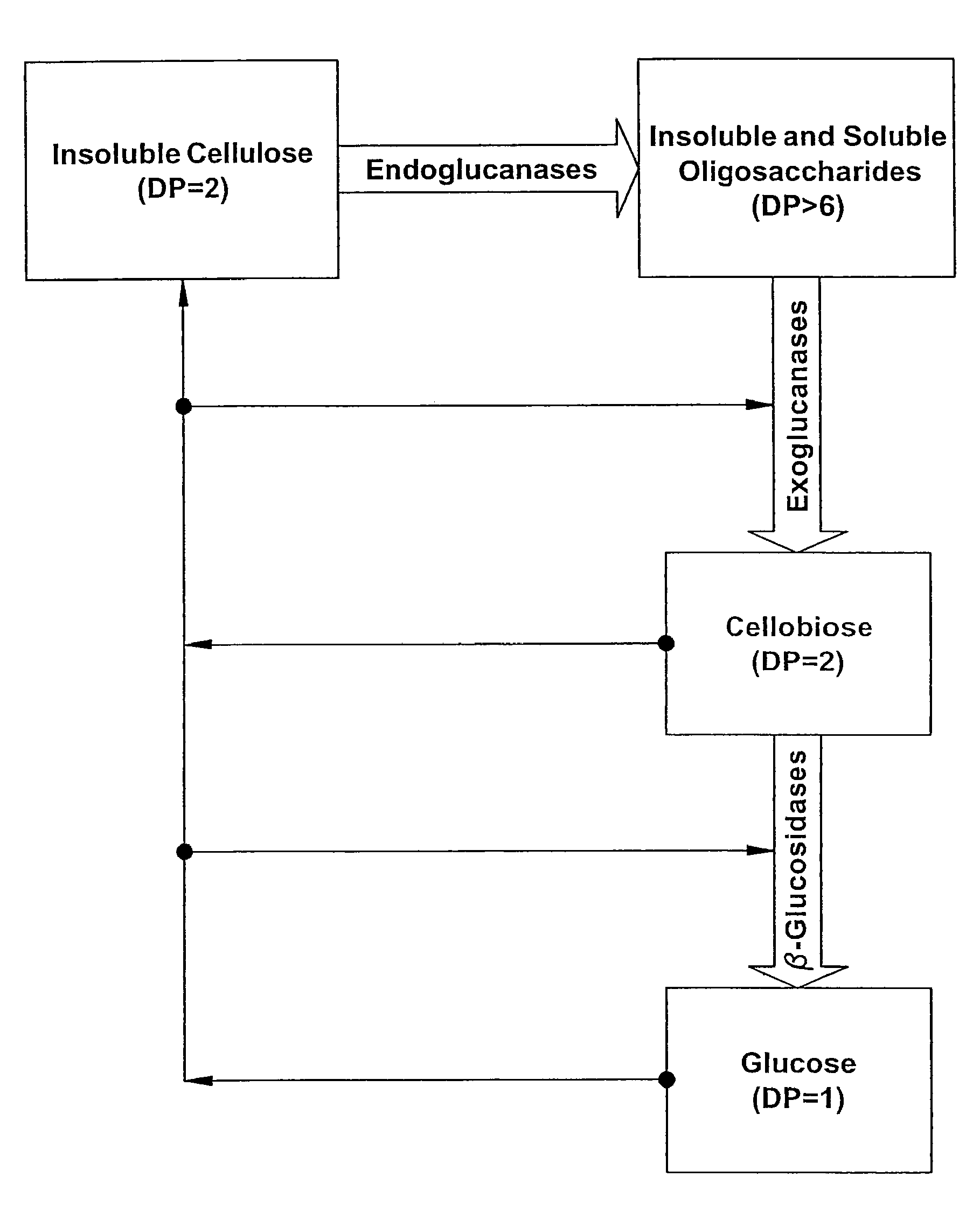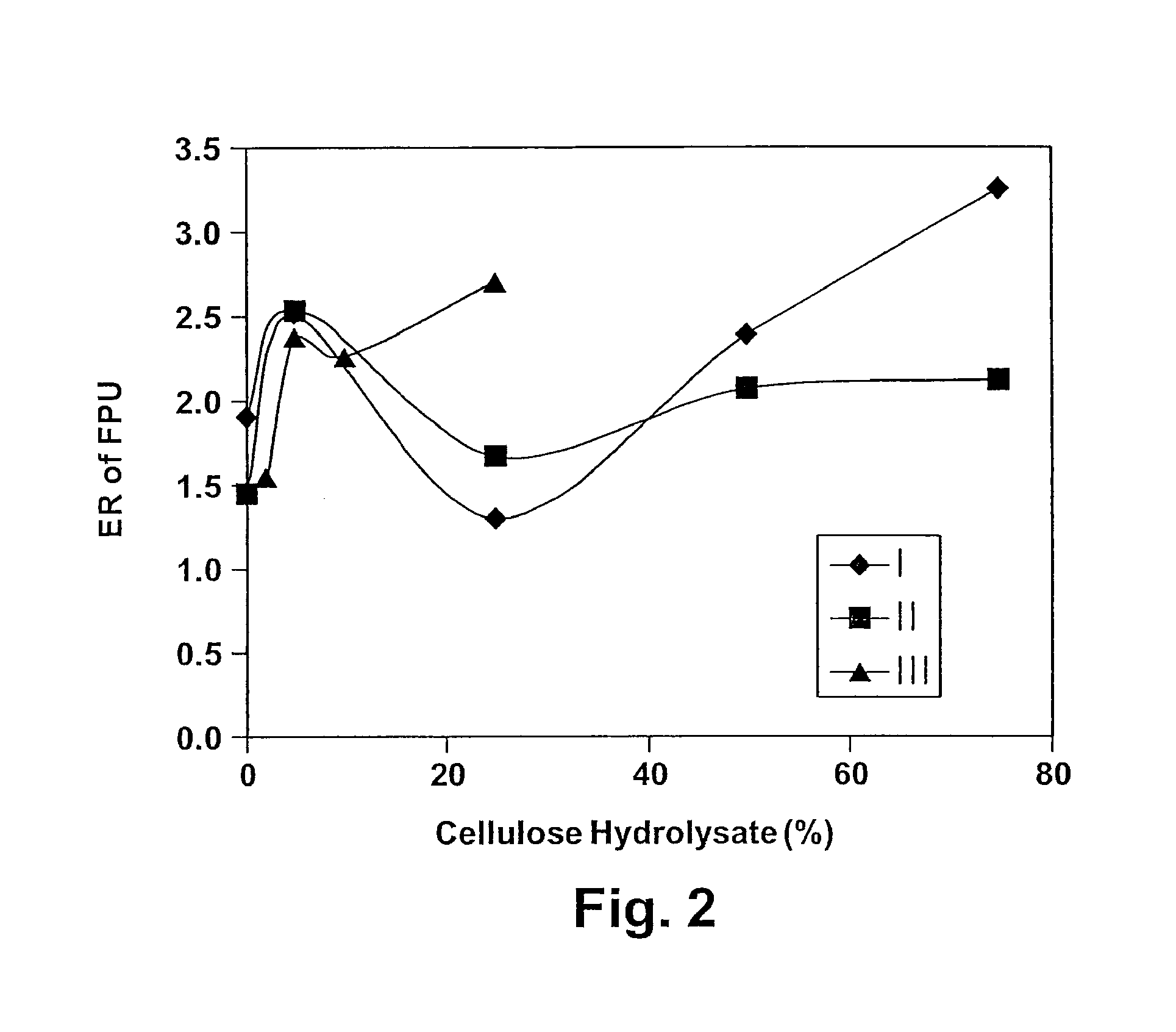Affinity Foam Fractionation for Collection and Purification of Materials
a technology of foam and affinity foam, which is applied in the field of purifying and/or concentrating compounds, can solve the problems of increasing process cost, affecting the purification effect, so as to achieve the effect of distributing the foam onto the surface of the foam
- Summary
- Abstract
- Description
- Claims
- Application Information
AI Technical Summary
Benefits of technology
Problems solved by technology
Method used
Image
Examples
example 1
Affinity Foam Fractionation with Addition of Cellulose Hydrolysate
[0063]The results from an experiment displaying the typical effects of three factors on the foaming behaviors are summarized in Tables 1 and 2 attached hereto. The factors are: (1) the presence or absence of cells in the foaming broth; (2) the different growth stages of the cells present; and (3) the hydrolysate addition. The cells used in cell-containing systems are pre-grown in a glucose-based medium (with 10 g / L glucose). For studying the effects of different growth stages, the cells are harvested either at the late exponential growth phase (the third day of batch cultivation) or at the stationary phase (the fifth day). The broth supernatant used as the basal cellulase-bearing medium in all of the systems is prepared by a fermentation using the hydrolysate-based medium. The broth is harvested on the fifth day, and centrifuged to remove the cells. The use of the same basal broth supernatant helped to ensure that dif...
example 2
Affinity Foam Fractionation with Addition of CMC
[0079]CMCs are modified, water-soluble, long-chain cellulose analogs. The potential use of CMCs for affinity foam fractionation of cellulase is discussed below. An experiment is carried out in cell-free supernatant of the broth collected from a hydrolysate-based fermentation. To obtain higher FPU (approximately 0.7) than that from the earlier batch cultivation (approximately 0.3-0.4 FPU), the fermentation is supplemented with a lactose-based continuous feed after reaching the stationary phase. Three systems are compared: (a) the broth supernatant (control); (b) the supernatant added with 5% (v / v) of a 5-g / L CMC solution; and (c) the supernatant added with 5% of a hardwood CH (having 16 g / L of reducing sugars). The ER of FPU, extracellular proteins, and reducing sugars are shown in FIG. 5. The CMC solution is found to perform as well as, if not better than, CH in cellulase enrichment.
[0080]CMC is available commercially in several molecu...
example 3
Affinity Foam Fractionation with Addition of Xylan Hydrolysate
[0081]The results of an experiment comparing the effects of xylan hydrolysate (XH) and cellulose (hardwood) hydrolysate (CH) in affinity foam fractionation of cellulase are given in Table 3. The cell-free broth supernatant is collected from the lactose-based fermentation, as described in Materials and Methods. The lactose-based broth, despite its much higher FPU (approximately 0.9), turned out to be not very foaming. The poor foaming correlated with its much lower concentration of extracellular proteins, confirming earlier observation that cellulase did not cause active foaming compared to certain other proteins present in the broth, and the selective separation of cellulase by foam fractionation requires the affinity foaming developed in this work.
[0082]XH had a stronger foaming ability than CH, as indicated by the substantially larger foam volumes obtained with XH than with CH in Table 3. The two hydrolysates performed ...
PUM
| Property | Measurement | Unit |
|---|---|---|
| Density | aaaaa | aaaaa |
| Density | aaaaa | aaaaa |
| Acidity | aaaaa | aaaaa |
Abstract
Description
Claims
Application Information
 Login to View More
Login to View More - R&D
- Intellectual Property
- Life Sciences
- Materials
- Tech Scout
- Unparalleled Data Quality
- Higher Quality Content
- 60% Fewer Hallucinations
Browse by: Latest US Patents, China's latest patents, Technical Efficacy Thesaurus, Application Domain, Technology Topic, Popular Technical Reports.
© 2025 PatSnap. All rights reserved.Legal|Privacy policy|Modern Slavery Act Transparency Statement|Sitemap|About US| Contact US: help@patsnap.com



